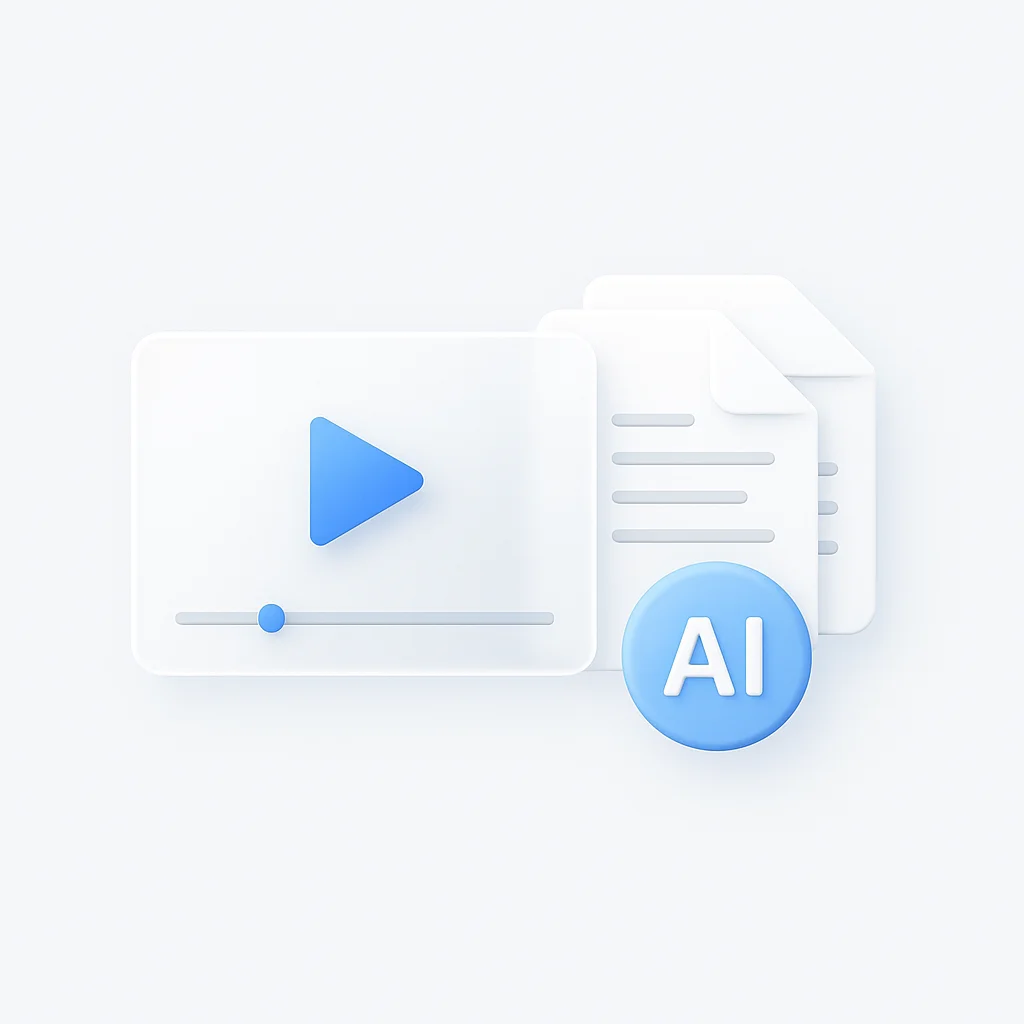デジタル化の時代において、画面録画を通じて記録、共有、共同作業を行う能力はますます重要になっています。教育者が教材を作成する場合でも、チームリーダーが複雑なタスクを説明する場合でも、マーケターが製品をデモンストレーションする場合でも、画面録画ツールは不可欠です。この分野では、ScreencastifyとLoomという2つの人気のあるツールがリーダーとして登場しています。どちらも堅牢な画面録画機能を提供していますが、さまざまなニーズや好みに対応しています。この記事では、ScreencastifyとLoomの詳細な比較を提供し、使いやすさ、機能などを掘り下げて、ニーズに合った適切なツールを選択できるようにします。
Loom
2016年に発売されたLoomは、汎用性の高いビデオメッセージングツールであり、ユーザーはメッセージを送信し、すぐに共有可能なビデオを通じて複雑なアイデアをより効率的に説明できます。Loomは、デスクトップアプリケーションとChrome拡張機能を提供し、フルスクリーン、ウィンドウ、およびWebカメラの録画を可能にします。その主な強みは、使いやすさ、顔と画面の録画を組み合わせる機能、および強力なビデオ管理機能にあります。Loomは、電子メールのやり取りを大幅に削減し、即座に共有できるため、コミュニケーションとコラボレーションの改善を目指すチームの間で支持を得ています。
Screencastify
2013年に設立されたScreencastifyは、ブラウザから直接画面録画機能を提供するChrome拡張機能です。これは、ビデオをすばやくキャプチャ、編集、共有できる使いやすいツールです。Screencastifyを使用すると、フルスクリーン、単一のブラウザタブ、またはWebカメラのみを録画できます。長年にわたり、Screencastifyは教育者や企業の間で人気のある選択肢になり、課題、チュートリアル、フィードバック、デモンストレーション用のビデオを作成できるようになりました。
これらのツールはどちらも、デジタルコミュニケーションと教育の世界で独自のスペースを切り開いています。2つの選択は、多くの場合、ユーザーの特定のニーズとリソースによって異なります。
Loom vs Screencastify
使いやすさ
使いやすさは、画面録画ツールを選択する際に重要な要素となることが多く、ユーザーエクスペリエンスに直接影響します。
ScreencastifyはChrome拡張機能であり、そのインターフェイスはクリーンでミニマルです。ブラウザのツールバーに直接配置され、簡単にアクセスできます。オンボーディングプロセスはスムーズで、セットアップと録画プロセスをガイドするのに役立つプロンプトが表示されます。ただし、一部のユーザーは、特に複数の同様の拡張機能を実行したり、大規模な録画を処理したりする場合、ScreencastifyによってChromeが遅くなることに気づいています。
Loomは、一方、デスクトップアプリとブラウザ拡張機能の両方を提供し、より柔軟性を提供します。その直感的なダッシュボードレイアウトとシンプルなコントロールにより、ビデオの録画、一時停止、または停止が簡単になります。新しいユーザーには、ツールのナビゲートに役立つ簡単なチュートリアルが表示されます。
どちらのツールも、録画の開始、一時停止、停止、保存に対する簡単なアプローチを持っています。ただし、Loomのデスクトップアプリケーションは、ブラウザ外での録画機能など、より広範囲な録画オプションを提供します。
画面録画機能
これらのツールの中心的な機能は、もちろん画面録画です。この分野でのパフォーマンスを比較してみましょう。
-
録画の種類: ScreencastifyとLoomはどちらも、フルスクリーン録画、ブラウザタブ録画、およびWebカメラ録画をサポートしています。これにより、画面上のすべてをキャプチャしたり、単一のタブに焦点を当てたり、対面コンテンツを録画したりできます。
-
注釈ツールと画面上の描画: Screencastifyは、ペン、蛍光ペン、マウスポットライトなどのさまざまな注釈ツールを提供し、録画中に画面に直接描画できます。Loomもこれらのツールを提供していますが、デスクトップアプリケーションでのみ使用できます。
-
ポストプロダクション編集: 編集に関しては、LoomがScreencastifyよりも優れています。Screencastifyは基本的なトリミングを提供しますが、Loomはトリミング、テキストオーバーレイ、およびコールトゥアクションオプションを含む、より包括的な編集ツールスイートを提供します。
ビデオの管理と共有
ビデオの管理、ストレージ、および共有機能は、ScreencastifyとLoomを比較する際に考慮すべき重要な側面です。
Screencastifyを使用すると、ビデオをGoogleドライブに保存したり、ローカルストレージにダウンロードしたりできます。すべての録画が保存されるGoogleドライブ内の自動フォルダーを使用すると、整理が簡単になります。共有オプションには、共有可能なリンクの生成、YouTubeへの直接投稿、またはMP4またはGIFとしてのエクスポートが含まれます。Screencastifyを使用すると、パスワードを設定したり、コンテンツを表示できるユーザーを選択したりすることで、共有ビデオへのアクセスを制限することもできます。
Loomは、その堅牢なビデオ管理システムで際立っています。ビデオは、ユーザーのLoomライブラリのクラウドに自動的に保存され、フォルダーに整理できます。Loomの共有機能には、リンクの生成、ビデオの埋め込み、ダウンロード、またはソーシャルメディアプラットフォームへの直接共有が含まれます。Screencastifyと同様に、Loomも共有ビデオへのアクセスを制御するオプションを提供しますが、ビデオを視聴したユーザーを追跡できる追加機能があります。
高度な機能
ScreencastifyとLoomの高度な機能は、特定の要件を持つユーザーにとって決定的な要因となる可能性があります。
Screencastifyの主なユニークな機能は、フォーカスモードです。これは、ユーザーのマウスカーソルを強調表示し、画面の残りの部分を暗くして視認性を高めます。ただし、無料版では、ビデオのトリミングやコールトゥアクションボタンなどの機能がありません。
Loomは、一方、無料プランでもさまざまな高度な機能を提供しています。ユーザーは、ビデオの最後にコールトゥアクションを追加できます。これは、マーケターにとって非常に有益です。また、ユーザーはビデオのカスタムサムネイルを作成して、共有時のビデオの外観を向上させることができます。さらに、Loomのデスクトップアプリケーションは描画ツールを提供しており、録画中にビデオに注釈を付けるために使用できます。
次のセクションでは、ScreencastifyとLoomが他の生産性およびプロジェクト管理ツールとどのように統合されているかを探ります。
他のツールとの統合
既存のワークフローとのシームレスな統合により、画面録画ツールの魅力が大幅に高まる可能性があります。ScreencastifyとLoomはどちらも、さまざまな統合を提供しています。
ScreencastifyはGoogle Workspaceとシームレスに統合され、ユーザーはビデオをGoogleドライブに直接保存および共有したり、YouTubeに直接投稿したりできます。さらに、ScreencastifyはGoogle Classroomとの統合も提供しています。これは教育者にとって貴重な機能です。
Loomは統合をさらに一歩進めます。Google Workspaceとは別に、Slackと統合され、ユーザーはプラットフォームでビデオを直接共有できます。さらに、LoomはAsana、Trello、GitHubなどのプロジェクト管理ツールとの統合を提供し、チームのコラボレーションと生産性に最適なツールとなっています。
価格
Screencastifyには、機能が制限された5分間の録画が可能な無料バージョンがあります。無制限の録画時間と、トリミングやトリミングなどの機能へのアクセスについては、年間49ドルでScreencastify Unlimitedにアップグレードできます。
Loomは、一方、最大100個のビデオとスクリーンショットを備えた、より寛大な無料プランを提供しています。無制限のビデオ、優先サポート、および描画ツールやコールトゥアクションなどの追加機能にアクセスするには、月額10ドルまたは年間96ドルでLoom Proにアップグレードできます。
費用対効果を検討する際には、ニーズを評価することが重要です。主な要件が単純な画面録画であり、短いビデオに満足している場合は、Screencastifyの無料バージョンで十分な場合があります。ただし、高度な機能、より長い録画を行う機能、およびより深い統合が必要な場合は、Loom Proへの投資が価値がある場合があります。
データの安全性
今日のデジタル時代では、データの安全性が重要な懸念事項です。ScreencastifyとLoomがデータの暗号化とそのセキュリティプロトコルをどのように管理しているかを見てみましょう。
Screencastifyは、ユーザーデータを注意して処理します。Googleサインインシステムを使用するため、パスワードを保存しません。また、すべてのデータ転送は、暗号化されたHTTPS接続を介して行われます。Screencastifyのプライバシーポリシーは、ユーザーデータを販売しないと主張しており、プライバシーを意識するユーザーにとっては安心できる要素です。
Loomもユーザーデータのセキュリティを優先します。保存時および転送時に暗号化を使用して、ユーザー情報を保護します。さらに、LoomはGDPRに準拠しており、透明性のあるプライバシーポリシーを維持しています。彼らは、個人データを販売せず、サービスの改善とユーザーエクスペリエンスのためにのみユーザーデータを使用することを明確に述べています。
カスタマーサポート
信頼できるカスタマーサポートがあると、画面録画ツールのエクスペリエンスに違いが生じる可能性があります。
Screencastifyは、役立つ記事、ビデオチュートリアル、およびFAQを備えたオンラインナレッジベースを提供しています。ただし、電子メールによる直接のカスタマーサポートは、プレミアムユーザーのみが利用できます。
Loomは、チュートリアルとFAQが完備された包括的なヘルプセンターを提供しています。また、プランに関係なく、すべてのユーザーにメールサポートを提供しています。ユーザーレビューに基づいて、Loomのカスタマーサポートは、その応答性と有用性で高く評価されています。
次のセクションでは、ScreencastifyとLoomの両方のデータセキュリティプロトコルについて詳しく説明します。
| 機能/ツール | Screencastify | Loom |
|---|---|---|
| プラットフォーム | ブラウザ拡張機能(Chrome) | ブラウザ拡張機能(Chrome)とデスクトップアプリ |
| 使いやすさ | ユーザーフレンドリーなインターフェース | 直感的なダッシュボードレイアウト |
| 録画オプション | フルスクリーン、ブラウザタブ、ウェブカメラ | フルスクリーン、ウィンドウ、ウェブカメラ |
| 注釈ツール | 利用可能(ペン、蛍光ペン、マウスポットライト) | デスクトップアプリで利用可能 |
| ポストプロダクション編集 | 基本的なトリミング | 包括的な編集ツール |
| ビデオ管理 | Googleドライブへの自動保存、ローカルストレージへのダウンロード | Loomライブラリへの自動保存(クラウドストレージ)、ダウンロード可能 |
| ビデオ共有 | 共有可能なリンク、YouTubeへの直接投稿、MP4/GIFとしてエクスポート | 共有可能なリンク、ビデオの埋め込み、ソーシャルメディアへの直接共有 |
| アクセス制御 | パスワード制限、ビューアアクセスの制御 | パスワード制限、ビューアアクセスの制御、ビューア追跡 |
| 統合 | Google Workspace、Google Classroom | Google Workspace、Slack、Asana、Trello、GitHub |
| 価格設定 | 無料版あり、プレミアムは年間49ドル | 無料版あり、Proは月額10ドルまたは年間96ドル |
| カスタマーサポート | オンラインナレッジベース、プレミアムユーザー向けのメールサポート | 包括的なヘルプセンター、すべてのユーザー向けのメールサポート |
| データの安全性 | Googleサインイン、暗号化されたデータ転送、ユーザーデータの販売なし | 保存時および転送時の暗号化、GDPR準拠、個人データの販売なし |
結論
要約すると、ScreencastifyとLoomはどちらも堅牢な画面録画ツールであり、それぞれに独自の強みがあります。
Screencastifyは、Googleエコシステムへの統合、シンプルさ、および費用対効果の高いプレミアムプランにより、簡単な画面録画機能を必要とする教育者や個人に最適です。
Loomは、一方、高度なビデオ編集と管理、より幅広い統合オプション、および便利な無料プランを含む、より包括的な機能セットを提供します。より高度な機能が必要なチームコラボレーションやプロフェッショナルな用途に適しています。
ただし、ScreencastifyとLoomの選択は、最終的には特定のニーズによって異なります。両方のツールの無料版を試して、その機能を調べ、どのツールが要件に最も適しているかを判断することをお勧めします。






